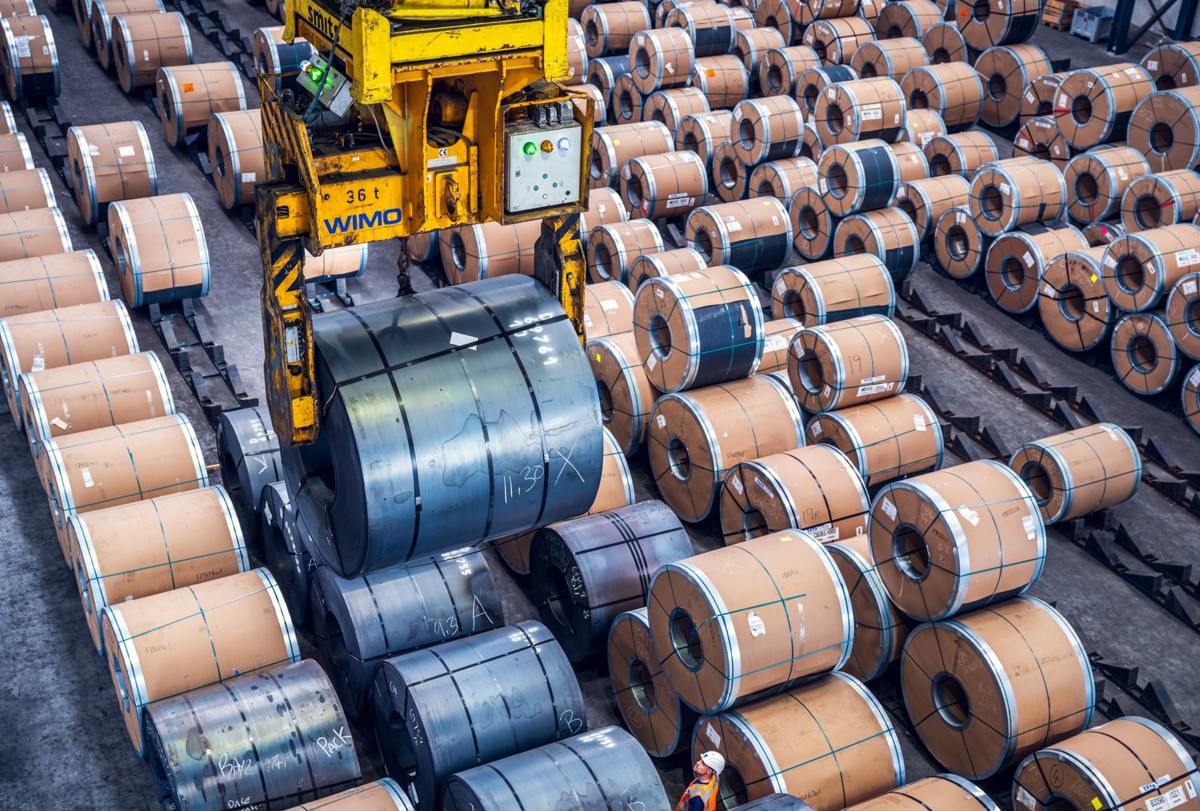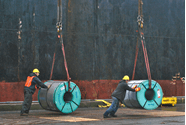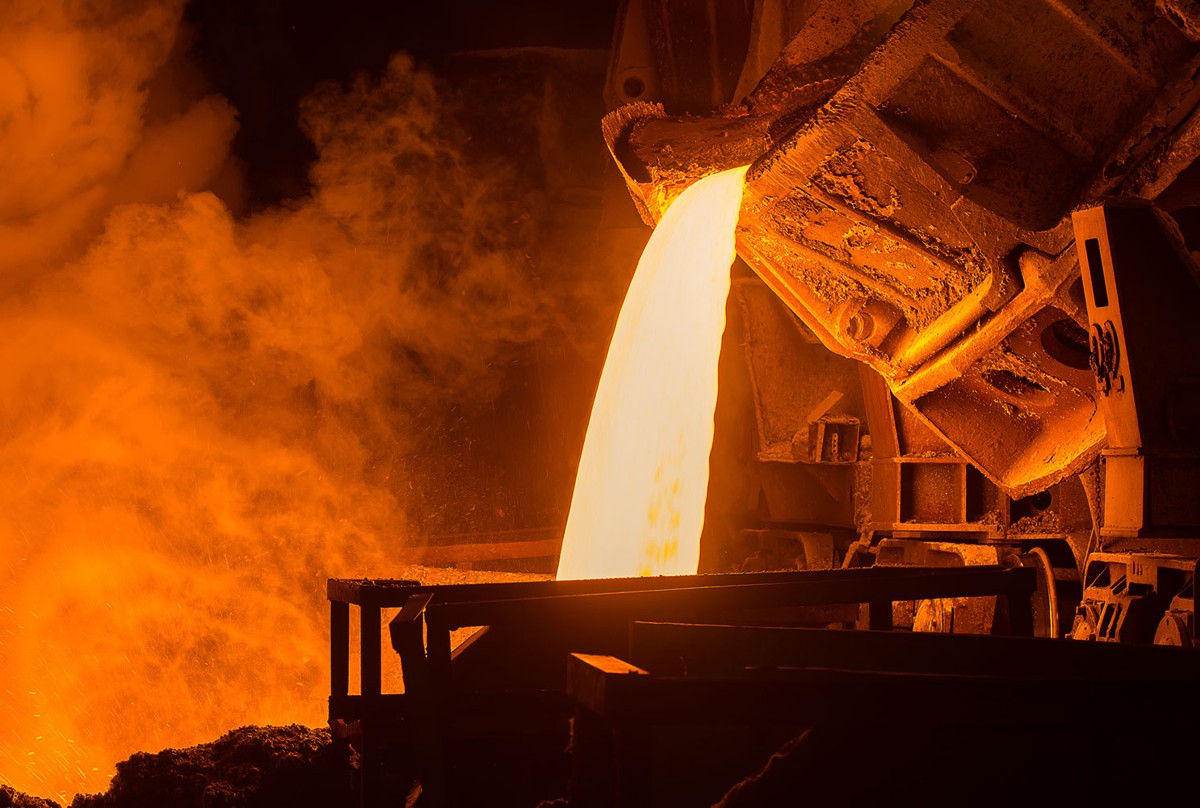Market Data
February 27, 2025
Steelmaking raw materials more expensive in February
Written by Brett Linton
Prices for six of the seven steelmaking raw materials SMU tracks increased from January to February, according to our latest analysis.
Shredded scrap, busheling scrap, iron ore, aluminum, zinc, and coking coal all saw month-over-month (m/m) gains in February. Pig iron prices remained mostly unchanged, however recent reports show that prices have begun to trend higher.
Prices for four of the seven raw materials are more expensive than they were three months ago. But compared to this time last year, all but two materials were cheaper.
Table 1 shows the latest prices for each product and their changes from recent months (click to expand).
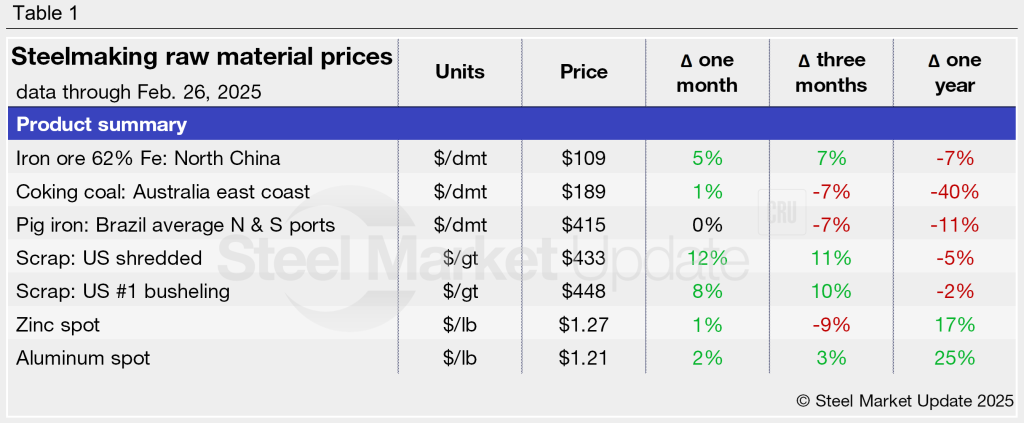
Iron ore
The import price of 62% Fe Chinese iron ore fines has risen each of the past six weeks. Prices had hovered in the $98-106 per dry metric ton (dmt) range from October through early February. The latest weekly spot price as of Feb. 26 is up to a seven-month high of $104/dmt delivered North China (Figure 1). Iron ore is 7% more expensive than prices seen three months ago, but 7% cheaper than one year ago.
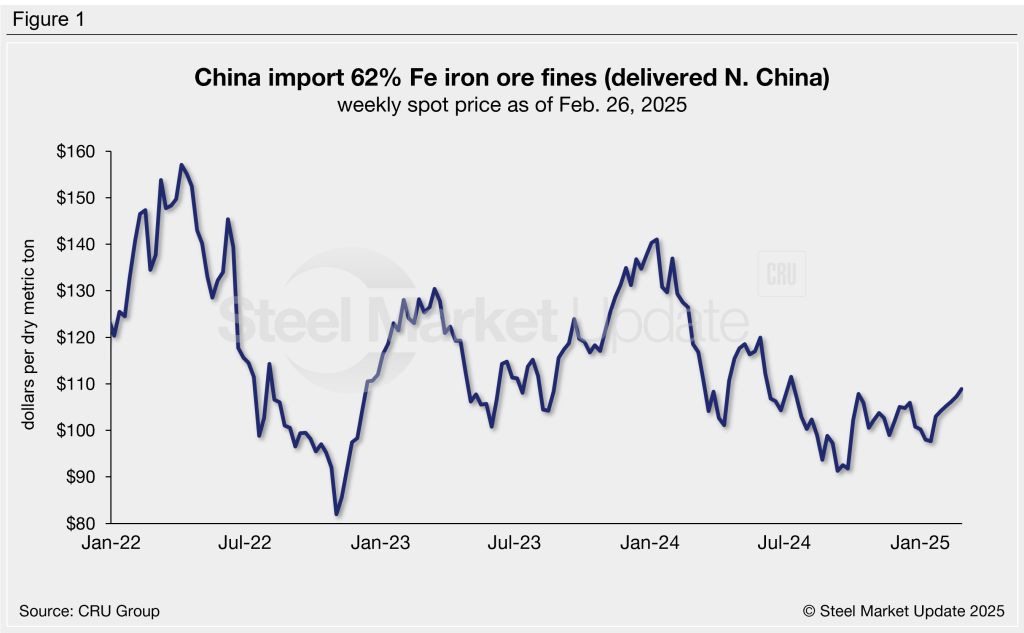
Coking coal
Prices for premium hard coking coal have trended downward over the past year and a half, recently reaching a three-year low of $182/dmt last September. Prices partially recovered through October but have edged lower since. They stand at $189/dmt this week (Figure 2). Coking coal is 7% less expensive than it was three months ago and 40% lower than February 2024 levels.
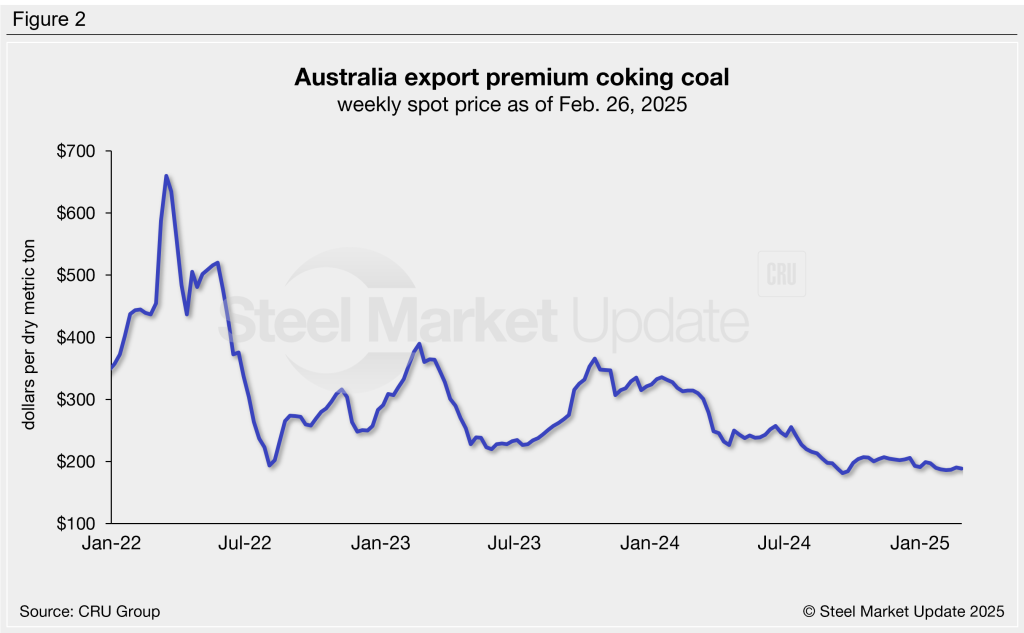
Pig iron
Following months of stability, pig iron prices have trended lower since last November. Prices were flat from January to February, holding at a four-year low of $415/dmt (Figure 3). Pig iron is 7% cheaper than it was three months ago and 11% less than it was this time last year.
Recent reports indicate that the pig iron market has abruptly increased over the last two weeks, with recent Brazilian trades at $430/dmt.
Recall that in 2022 pig iron prices soared to a historic high of $975/dmt following Russia’s invasion of Ukraine. Most of the pig iron imported to the US had come from Russia, Ukraine, and Brazil. This report uses Brazilian prices, averaging north and south port prices.
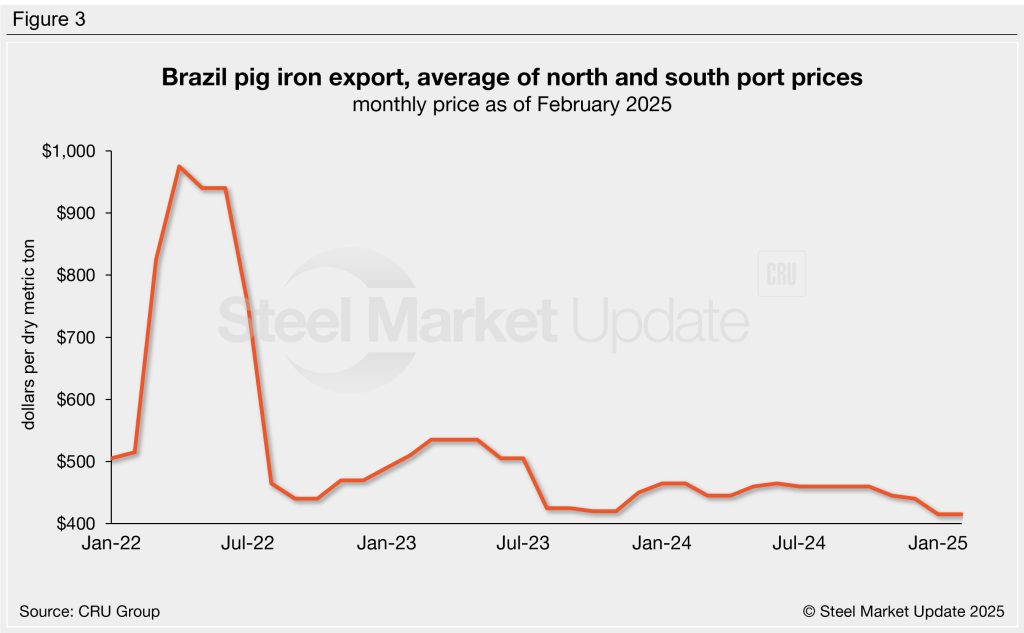
Scrap
Steel scrap prices saw strong gains from January to February. In fact, it was the largest monthly increase recorded since December 2023. SMU’s scrap indices were up 8-12% m/m, with shredded scrap up $45 per gross ton (gt) to $433/gt and busheling scrap up $35/gt to $449/gt (Figure 4). Scrap prices are 10-11% higher than those seen three months ago, but 2-5% lower than they were one year prior.
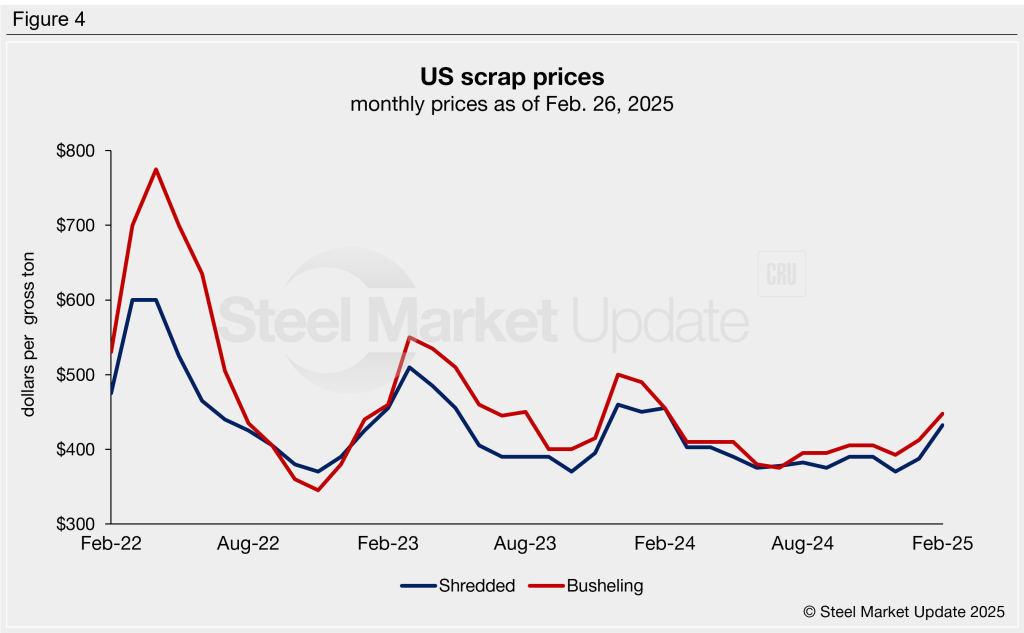
Changes in the relationship between scrap and iron ore prices offer insights into the competitiveness of integrated (blast furnace) mills, whose primary feedstock is iron ore, compared to mini-mills (electric arc furnace), whose primary feedstock is scrap. Figure 5 compares the prices of mill raw materials over the past few years.
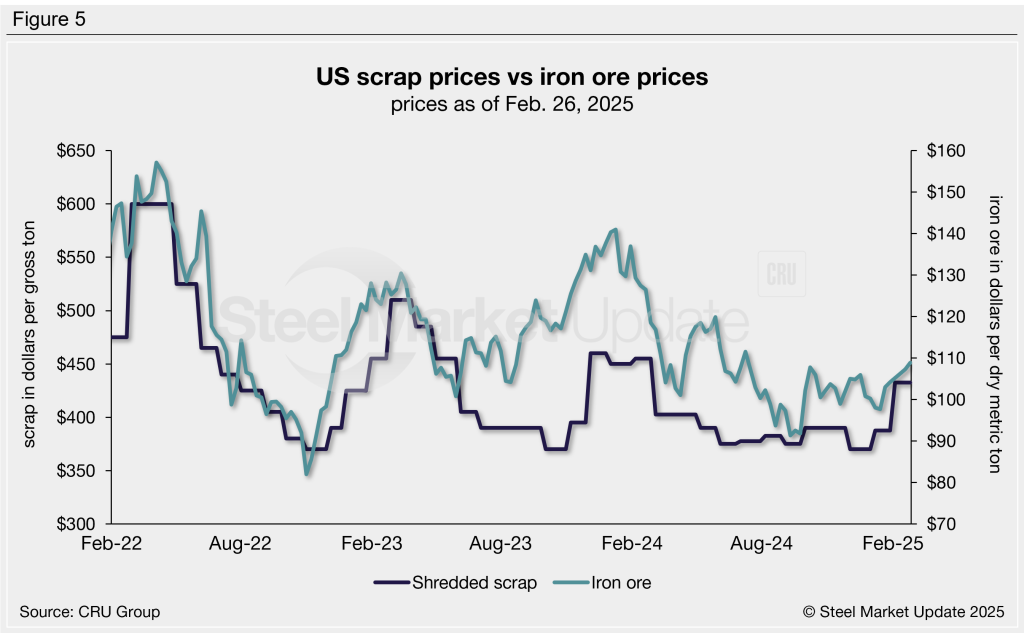
To compare these two mill feedstock materials, SMU divides the shredded scrap price by the iron ore price to calculate a ratio. A high ratio favors the integrated mills, a lower ratio favors the mini-mill producers. Integrated mills had mostly held the cost advantage between late 2021 through mid-2023 (Figure 6). The advantage then briefly shifted to mini-mill producers in the second half of 2023. After bouncing around in 2024, the ratio has slightly favored integrated mills since last August. The ratio has trended higher in 2025, registering 3.97 as of Feb. 26.
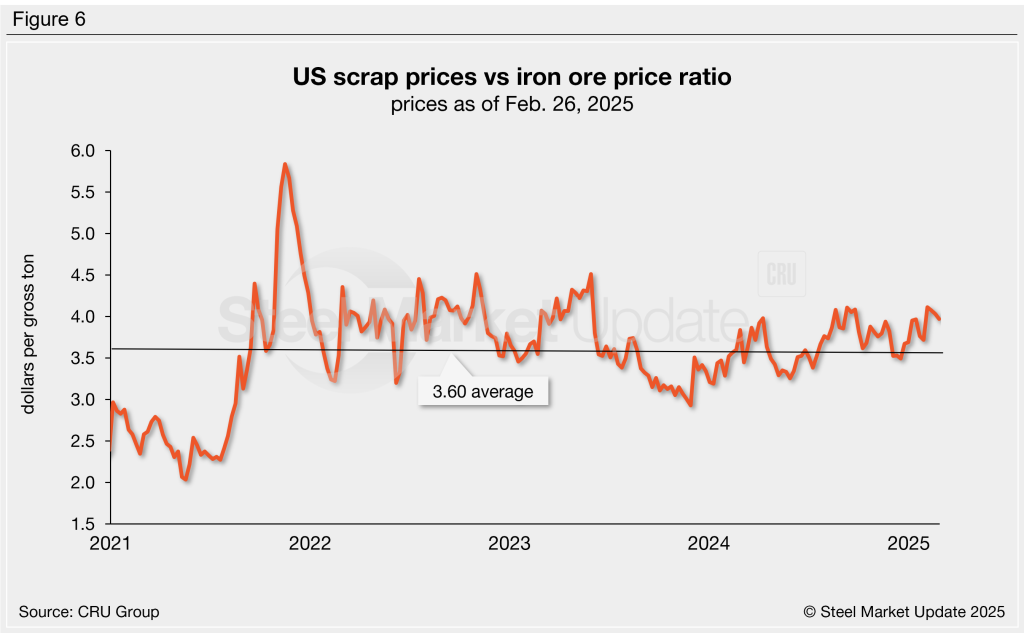
Zinc and aluminum
Zinc and aluminum are used in some coated steel products. Surges in spot prices (like those seen last October) can prompt steel mills to increase their coating extras.
Zinc prices have overall trended lower across the last three months. The latest LME cash price for zinc is $1.27 per pound as of Feb. 26, 1% higher than a one month ago. Zinc prices are 9% lower than those seen three months prior, but 17% more expensive than February 2024 levels (Figure 7).
Aluminum prices had been trending similarly to zinc prices but changed course at the start of 2025. The latest LME cash price is $1.21/lb and has remained relatively stable since September, up 2% m/m. Aluminum prices are 3% higher than levels seen three months ago and 25% more expensive than this time last year. Note that aluminum spot prices sometimes have large swings and return to typical levels within a few days, as seen twice in Figure 7.




